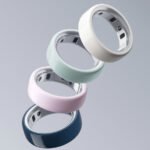It helps to know the different resistor types and their uses. Tech companies use them in smartphones, TVs, radios, and every device in your home. Choosing the wrong type could lead to a product malfunctioning inside someone’s pocket in an airplane.
This article aims to teach you all about their merits, demerits, and popular applications. You’ll also find out more about the most common ones.
Here’s everything you need to know about these tiny but important pieces of tech:
What Are Resistors?
There are different types of resistors, but most are two-terminal electrical components that passively limit current or reduce voltage. Measured in Ohms (Ω), they work alongside op-amps or controllers to complete various operations. Many engineers use them to change properties or measure current within a circuit.
They vary in power rating, size, performance, and overall cost. Chip surface-mount (SMD), current sense, potentiometers, thermistors, through-hole, and wire-wound are the most common. Below is a little more detail about these versions.
1. Chip SMD Resistors
SMDs are tiny and perfect for printed circuit boards (PCBs). Smartphones, laptops, and most silicon-printed circuits use them for operations that ensure signals are right at all times.
Chip SMDs come in two different types:
- Thin Film
Used in high precision applications like audio, medical, or testing equipment, they provide low temperature-coefficients and variations. They are quiet and rather pricey.
- Thick Film
Found in most hardware, they have higher variations, temperature coefficients, and are noisier than their counterparts. Companies prefer using thick film in microwaves or desktop computers.
2. Current Sense Resistors
Current sense resistors (aka shunts) gauge the current flow within a circuit and convert the voltage into a readable format. They minimize power consumption and reduce the risks of a short-circuit. Musicians and music producers often connect them to amplifiers to minimize noise’s impact at certain resolution levels.
3. Potentiometers
Trimmer potentiometers (aka trimpots) are small variable resistors that are PCB mountable and screwdriver adjustable. They can be SMD or through-hole with side or top adjustment. Trimpots are single or multi-turn and used in amplifier gain control or circuit tuning up to 25 times.
4. Thermistors
Thermistors lower resistance with temperature, making them ideal for sensors between -55C and 200C. They offer a great range of resistance, which is why companies usually install them in household appliances like refrigerators and ovens.
5. Through-hole Resistors
You can hand-solder through-hole resistors into a prototyping board or PCB or stick it into a breadboard, and they are long, pliable leads.
There are multiple types:
Carbon Film
Producers use them in high voltage power supplies, radar, x-rays, and laser technology. Metal film replaced them in most areas.
Metal Film
Metal film resistors have lower variations in resistance values and higher stability. Cheaper and offering better performance, computer and tech companies use them in desktops and gaming consoles.
Carbon Composition
These were popular in the 70s, but carbon and metal film replaced them. Today, we use them in high voltage power supplies (e.g., generators) and welding equipment.
Metal Oxide
Created with a metal film oxide wrapped around a ceramic rod, they were the first alternatives to carbon composition resistors. Since then, metal film resistors have replaced them.
6. Wire-wound
Wire-wound resistors provide high power ratings at high temperatures. Made of high-resistance wires wrapped around an insulating core, they offer better long-term usage. They’re bigger and more expensive than others and, therefore, more commonly used in circuit breakers and fuses.
While you might not be able to replace most without some electronic knowledge, you can swap a fuse in your circuit breaker quite easily.














